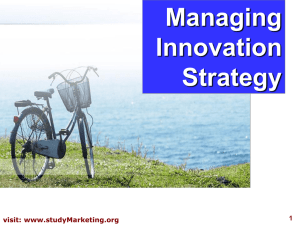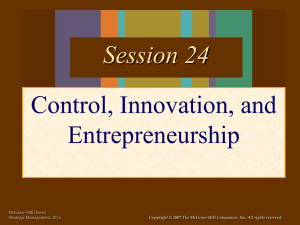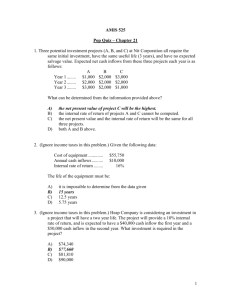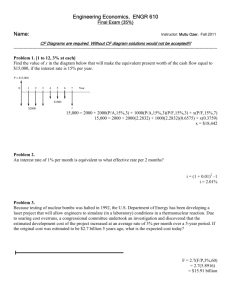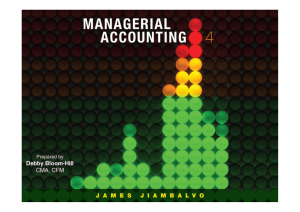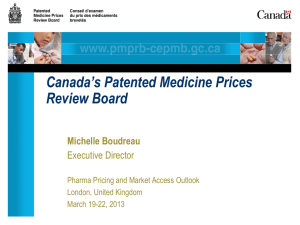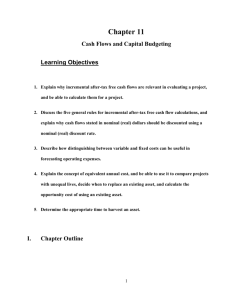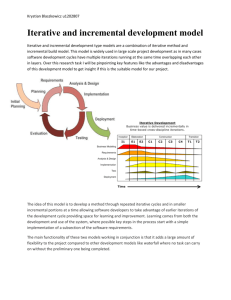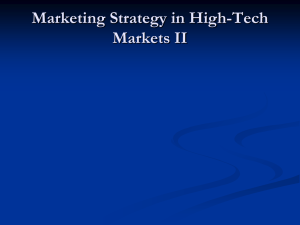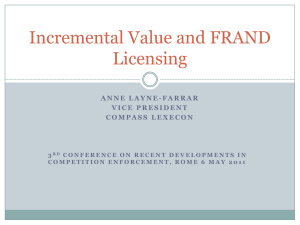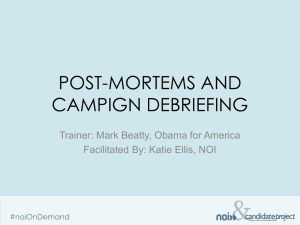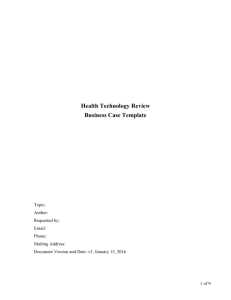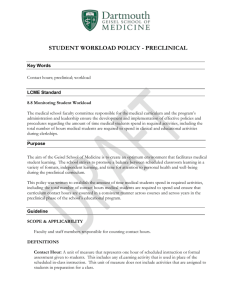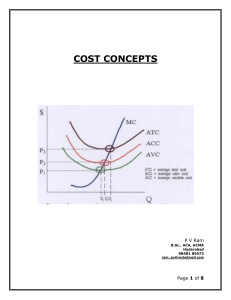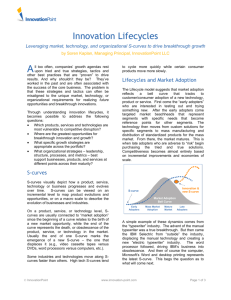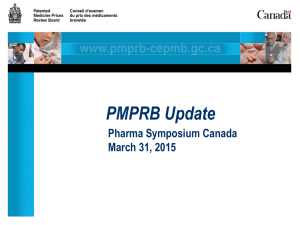PowerPoint Presentation - Pre
advertisement
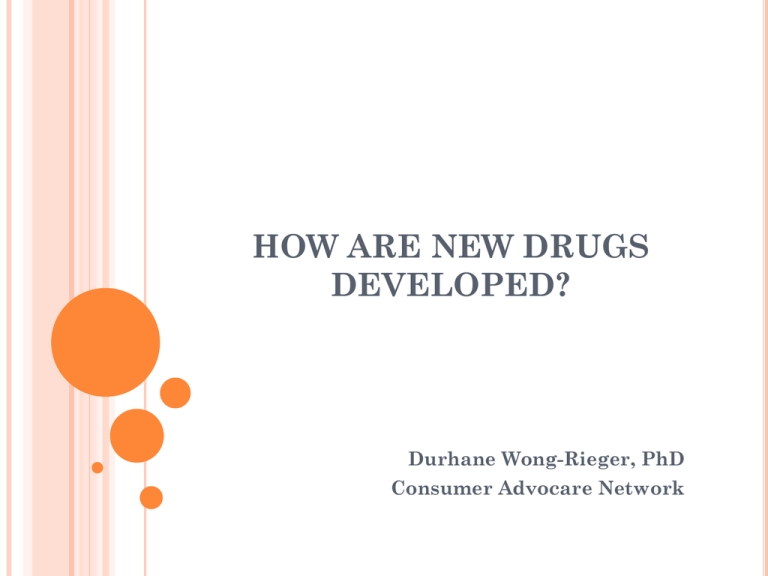
HOW ARE NEW DRUGS DEVELOPED? Durhane Wong-Rieger, PhD Consumer Advocare Network OVERVIEW Examples of “innovative” and “incremental” discoveries What are steps from discovery to regulatory submission? What are likelihood of success and cost through the process? INCREMENTAL VERSUS BREAKTHROUGH INNOVATION Breakthrough innovation is characterized by first-in-class, or new therapies Examples include: Penicillin (first antibiotic); Insulin (first animal insulins); Thorazine (first anti-psychotic); first birth control pill “A breakthrough drug product is the first one to be sold in Canada that treats effectively a particular illness or address effectively a particular indication” (PMPRB) FOLLOW-ON (INCREMENTAL DEVELOPMENT) Incremental Innovation is characterized by bit-by-bit, cumulative improvement Examples include: modern day antibiotics (4 days, one pill/day); newer insulin therapies, modern birth control pills, etc. Development of follow-on drugs occurs at the same time with that of the first-in-class Therapeutic value of follow-on drugs is reflected in the percentage of priority designations, inclusion in the clinical practice guidelines, and coverage in major formularies NEW PRODUCT DEVELOPMENT: RISKY AND EXPENSIVE Years Discovery (2–10 Years) 0 2 4 Phase I 20–80 Healthy Volunteers Used to Determine Safety and Dosage Phase III 1,000–5,000 Patient Volunteers Used to Monitor Adverse Reactions to Longterm Use Additional Post-marketing Testing Compound Success Rates by Stage 6 8 10 12 14 Preclinical Testing Laboratory and Animal Testing Phase II 100–300 Patient Volunteers Used to Look for Efficacy and Side Effects FDA Review Approval 5,000-10,000 Screened 250 Enter Preclinical Testing 5 Enter Clinical Testing 16 1 Approved by the FDA Net Cost: $1.3 billion invested over 15 years CLINICAL TRIALS Conducted to determine the safety and efficacy of the new health technologies Many types exist Phases: • • • • • Pre-clinical Phase I Phase II Phase III Phase IV (Post-Market) MOST PRODUCTS THAT GET TO MARKET NEVER MAKE ENOUGH TO RECOUP R&D INVESTMENT Value of After-Tax Net Lifetime Sales of New Drugs (in &Millions) 3000 2500 2000 1500 1000 500 $0 After-tax average R&D Cost 0 1st 2nd 3rd 4th 5th 6th 7th 8th 9th 10th New Products Grouped in Tenths According to Financial Success PMPRB - Pricing Does the drug provide value? Provincial Regulators Is the Drug Safe & Effective? Common Drug Review Health Canada MOVEMENT OF DRUG THROUGH REGULATORY SYSTEM Do we have budget to fund the drug?

